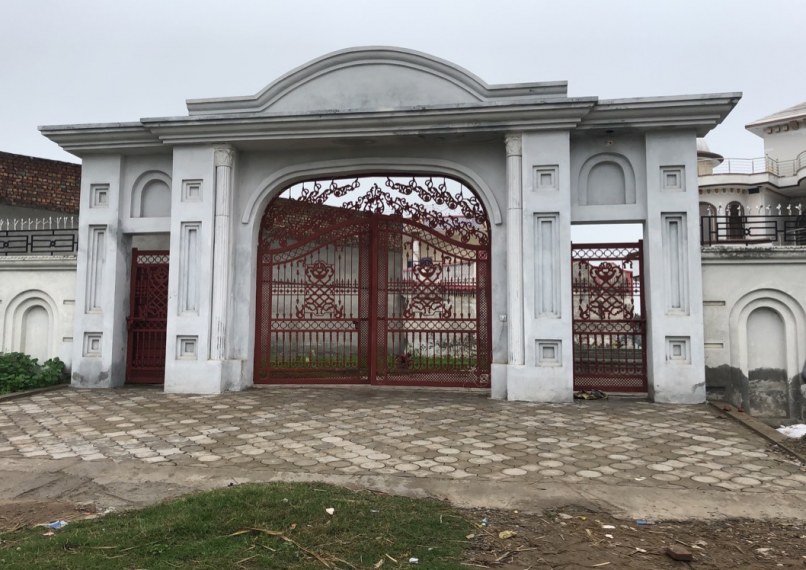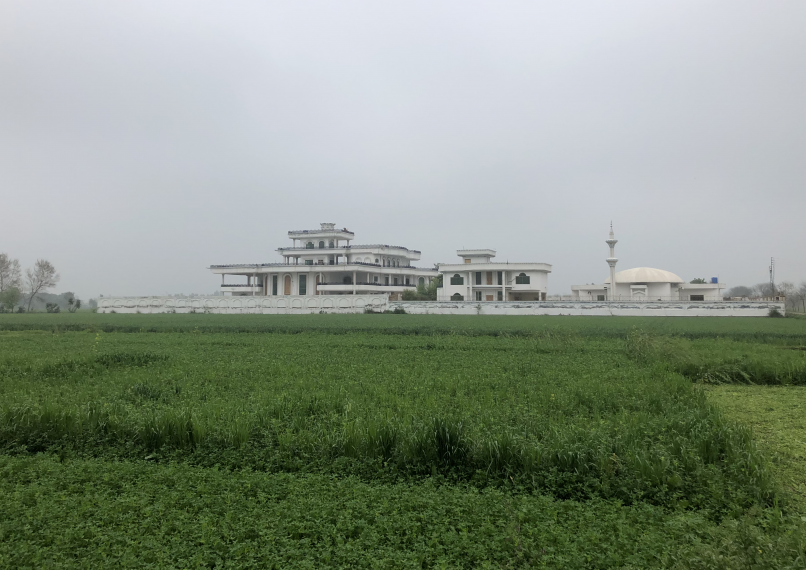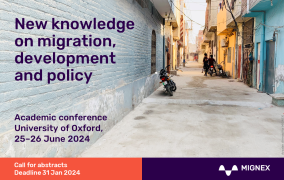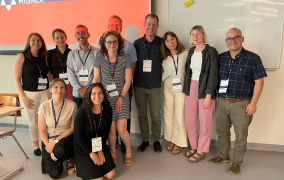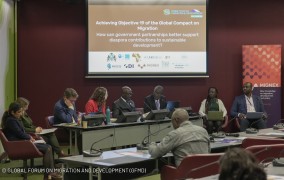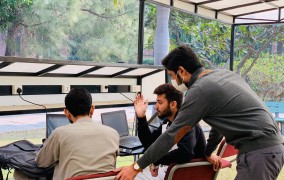MIGNEX Insight
Reflecting on the change migration brings about: Migrant houses and socio-economic hierarchies in Pakistan
What kinds of social and economic change does migration bring about? And how can such change be explored in meaningful ways? MIGNEX qualitative data collection in Chot Dheeran in Pakistan offers an opportunity to reflect on the possibilities and limitations of rapid and intense fieldwork.
The social and economic change which migration brings about is always embedded within the dynamics of social change, which are ongoing in societies and affected by global forces. Nevertheless, the mark of emigration on people and places — the kinds of social and economic change which migration over time brings about — remains an important topic of inquiry, alongside but not in isolation from migration drivers.
Based on an intense two-week stretch of MIGNEX fieldwork in Chot Dheeran, Punjab, Pakistan, we offer some rough and preliminary reflections on the ways in which migration changes communities. Chot Dheeran is one of three MIGNEX research areas in Pakistan and one of the totally 25 MIGNEX research areas. It is a place which was selected for inclusion in MIGNEX research, in part due to its substantial migration exposure over the past couple of decades.
Migrant houses and socio-economic hierarchies
While walking to-and-from the village centre during our fieldwork in Chot Dheeran, or between interviews and focus groups, the discussion in our small research team veered toward the pressing questions appearing in different shapes all around us: What exactly is the change which migration brings about? How does this change feed into or conflict with other forces of social and economic change in this area, regionally or nationally? And how are people in the area relating to — implicitly or explicitly — the changing social and economic realities, which migration at least plays a part in?
The palatial structures rising both within the village, and especially at its outskirts, are a striking mark of how migration holds the potential to provide financial resources at a scale otherwise unimaginable. But what kind of social and economic change do migrant houses represent, and for whom? In particular ways for those who are entitled to use or live in these buildings, for migrants and their families. Yet, the social impact on those who see — and live in the shadow of such constructions — are potentially as salient.
One plausible trope, well known to migration researchers, is that of migrant houses feeding into a culture of migration, as a driver of migration. Another, equally plausible trope is that social change in the locality is affected also for those who do not seek migration as a pathway for their own futures. This might take the form of feeding dissatisfaction, and sometimes resentment, of those in a position to migrate. But it might also contribute to desires to improve opportunities for youth locally and motivate initiatives to promote a variety of local futures.
The social fabric of Chot Dheeran – similar to other South Asian contexts – cannot be understood without considering families’ membership in different biraderis. This cultural and kinship membership positions them within the social hierarchy. Landownership is a crucial determinant of difference in most rural places, as is also the case in Chot Dheeran, and corresponds to particular biraderis. Simultaneously, membership in landless biraderis does not necessarily translate into economically worse off living conditions.
This is both because landowners with small land plots may struggle, and because there is a need, and therefore also business opportunities, for skilled workers in a range of professions. Significantly, this is also because pathways to upward economic and social mobility do exist, for instance through career paths in the army of Pakistan, education, or migration. What then is the precise role of migration — at a substantial scale and across biraderis — in the ongoing process of changing socio-economic hierarchies in a Pakistani village?
What can you (possibly) learn in two weeks?
Our fieldwork in Chot Dheeran can be described as simultaneously scratching the surface and diving in at the deep end to get entirely immersed. The MIGNEX project’s qualitative data collection is built around such rapid and intense field stints, comprising key informant interviews, focus groups, observation and photography components, in sum requiring direct communication with some 40-70 people in each of our research areas. The question, meanwhile, remains: what can you (possibly) learn in two weeks?
Three things are clear based on the Chot Dheeran experience: First, a substantial data set can be gathered within a short time span, when this is well-planned and local assistance is in abundance. We spent a lot of time on pre-fieldwork communication, a pre-fieldwork visit, and contact with different offices of the government and locally influential people. Second, a structured and targeted approach to collecting qualitative data is both possible and it can facilitate openness to the unexpected on the ground. This does, however, require an all-in attitude and working hours from the whole team. And third, experienced researchers involved in the research process, alongside junior colleagues, contribute both to strengthening the quality of the resulting data set and the knowledge co-production process this relies on.
Cite this publication
Erdal, Marta; Khan, Furrukh; Ahmad, Arslan; and Mahmood, Safia. (2020) Reflecting on the change migration brings about: Migrant houses and socio-economic hierarchies in Pakistan. MIGNEX Insights. Oslo: Peace Research Institute Oslo. Available at: https://www.mignex.org/publications/reflecting-change-migration-brings-about-migrant-houses-and-socio-economic-hierarchies
